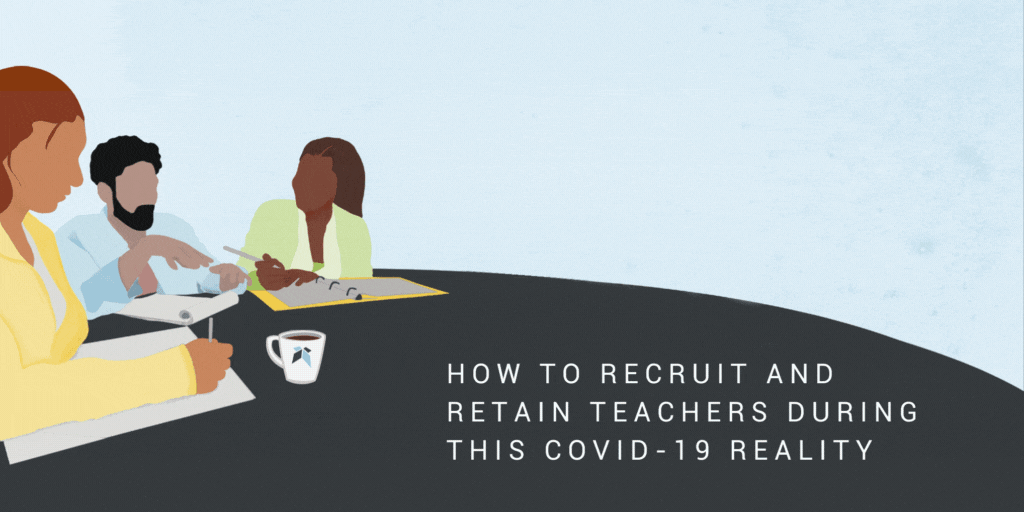
4 Practices to Immediately Improve the Teacher Experience in Your School
Teacher Retention | Remote Work | School Leadership
There are 88 million opportunities in the human genome for trait variations to make us unique, but when it comes to what we seek in the workplace, neuroscience suggests most humans crave the same three things – safety, belonging, and a sense of mattering. This is hardly news; Abraham Maslow wrote about these same needs in his 1943 paper on human motivation, and a quick scan of nearly any company’s Glassdoor reviews will highlight these variables.
The past year challenged the way nearly every organization approached these needs. Lack of personal connection, the inability to ‘disconnect’ from work, and whose health and safety are prioritized rank among a laundry list of complaints with today’s employee experience. And when it comes to the field of education, the pandemic doubled down on pre-existing conditions within the teacher experience.
In a 2017 LPI study, 55 percent of teachers cited working conditions as the top reason for leaving early, with nearly 16 percent of the workforce turning over annually. In the past year, shifts to and between remote environments have stress-tested a rigid system to its breaking point. Early research suggests that teachers worked more hours, experienced greater stress and burnout, and are more likely to leave the profession early. This is problematic for a number of reasons, including that turnover is costly, time-consuming, and limits student achievement.
Even with vaccinations or future herd immunity, our education system will likely never look or feel the same. Most districts will provide more robust and viable virtual options, permanent investments in digital and remote platforms and skills, and compete for a workforce that has just experienced the possibilities of working in more flexible environments than school systems have traditionally offered. These trends will require that our education system rethink the approach to the employee experience, both to recruit an incoming Generation Z and sustain the existing workforce.
While there is no one-size-fits-all plan, our learnings from the past year suggest four practices that have helped improve the teacher experience, whether fully virtual, remote, or in-person.
Emphasize Collaboration Among Staff
Employees say that meeting and socializing with colleagues is the number one thing they miss about in-person work. Because collaborative and social spaces like the lounge or faculty meetings longer exist in a virtual space, leaders must take intentional steps to ensure peer collaboration continues in remote or hybrid settings. For example:
- In meetings where some or all attendees are virtual, prioritize space for collaborative dialogue using check-ins or share-outs in chats, small-group conversation in breakout rooms, or collaborative tools like Jamboard or Padlet for employees to work together.
- Encourage and create time for informal affinity groups that can happen in-person or virtually, such as book clubs or yoga circles. Kick these off by modeling them yourself.
- Schedule short, informal one-on-one check-ins with nothing on the agenda except to hear how the other person is doing and recognize their efforts. Research suggests that teachers value principals who create a culture of recognition above almost any other issue.
Clearly Communicate with Your Team
Creating environments of open dialogue is essential to high performance and retention, but social distance and remote work mean that traditional communication vehicles (the community bulletin board, water cooler conversations, or even the body language and tone used when sharing an update) don’t exist in the same ways. Leaders must focus on ensuring clear, consistent, and two-way communication remains a norm. A few ideas:
- Clarify different modes of communication and the purpose for each. For example, virtual bulletin boards or checklists like Trello for standing updates, chat-based applications like Slack or Teams for in-the-moment clarifications or 1-1 conversations, and standing emails for longer or more descriptive information.
- Identify points of contact for different functions or types of needs, and post these visibly on an internal website or message board.
- Establish clear communication boundaries and guardrails (for example, chat responses are not expected after 5 p.m. or on weekends, respond to emails within 24 business hours, or have video on for staff-wide meetings if possible).
Define ‘Flexibility’ for Working In-Person, Hybrid, and Remotely
Although new flexibility in where, when, and how we work, additional stress can develop when teachers make assumptions about work-life boundaries. To help provide this clarity, leaders might:
- Provide clear expectations for all venues of work. For remote or hybrid employees, this might include dress, availability, and procedures. Don’t leave these things in a ‘gray’ space for these teachers to figure out, and seek consistencies in how equitably these are asked of in-person employees as well.
- Be aware and empathetic of the fact that home environments have different variables than brick and mortar settings. Communicate an understanding that people may need to have their cameras off or the possibilities of things at home that require attention like a child or pet.
Model Transparency
What does an ‘open door’ policy mean in a work environment that is not defined by physical doors? In a world of increased remote interaction, it's easier than ever to make decisions in isolation, invisibility, or through a high level of filtration. Leaders must make intentional efforts to create safe spaces for sharing thought processes, lessons learned, and feedback. This might include:
- Share what you are learning in public through social media or internal communication vehicles, and solicit feedback on new approaches.
- Host regular internal or external forums for people to bring open-ended questions that might otherwise be discussed informally or in 1-1s.
- Make your calendar visible (as appropriate), letting people know when and how you are prioritizing time. It’s okay to have breaks or work time scheduled – this can demonstrate that you value this for your employees as well.
Collaboration, communication, flexibility, and transparency are as important for our leaders to model for our teachers, as they are for our teachers to model for their students. By practicing these components in our day-to-day remote and hybrid environments, we can more intentionally design a teacher experience that both recruits and retains a strong teacher workforce.
Check out our comprehensive guide to teacher retention below!
About Arnoldo A. Gutierrez & Daniel Johnson
Arnoldo A. Gutierrez, Director Performance Management at San Antonio ISD and AASPA member Once he finished his Bachelor of Arts, Gutiérrez moved to Denver, Colorado and worked as a bilingual elementary teacher in JeffCo Public Schools (Denver, CO).
During the summer of 2004, Gutierrez was offered a pre-hire agreement to teach in San Antonio ISD (SAISD) where he taught 5th and 2nd grade. He has also served in the capacity of a Campus Instructional Coach, Administrative Assistant & Assistant Principal before moving to Human Resources. Within the Human Resources Department Gutiérrez served as the Administrative Officer for Paraprofessionals and Substitutes for 7 years and is currently the Director for Performance Management.
Gutiérrez received a Master of Arts in Education from the University of Texas at San Antonio and is completing the dissertation phase of Doctor of Organizational Development.
Although currently Gutiérrez is not working directly with students, he is keenly aware of the impact his current role has at the campus level and on students. Gutiérrez participates in continuous training to enhance his skills, such as IPEC (Institute for Professional Excellence in Coaching); Mediation Training through the Federal Mediation and Conciliation Service (FMCS); and Crucial Conversations/Crucial Accountability. “I consider it an honor, blessing and privilege to be able to serve the students, families and staff within San Antonio ISD.”
Daniel Johnson, Associate Partner at Education Elements Daniel Johnson is an Associate Partner at Education Elements and works with district and school teams to develop responsive, personalized practices that improve student outcomes. Johnson is a former science teacher, having taught middle and high school in Mississippi and Brooklyn, NY.
During his time in Mississippi, he served on the school’s leadership team working with state consultants on school improvement efforts. In New York, he worked in a high-performing charter school, working with a team of teachers to build the network’s seventh grade inquiry-based science curriculum in alignment with NGSS standards and an inquiry-based instructional model.
At Education Elements, he has led projects focused on personalized learning and responsive leadership for districts and state organizations across Alabama, Georgia, Kansas, Minnesota, New York, and Texas. He serves as the consulting team’s hiring manager and oversees the development of the consultancy’s Teacher Recruitment and Retention retention services. He holds a B.A in Political Science and a B.S. in Journalism from the University of Kansas, and a Master's of Arts in Teaching from the Relay Graduate School of Education in New York. He grew up in Michigan and currently lives in Washington, D.C.


-1.png)

